西濤設(shè)計(jì)工作室 | 吱音
前身為北京紡織倉庫的郎園station園區(qū)內(nèi),有一排建于六十年代的連續(xù)坡屋頂磚墻的廠房。 西濤設(shè)計(jì)工作室將其中的一個(gè)開間設(shè)計(jì)改造為家居設(shè)計(jì)品牌 – 吱音的展示空間。
Atelier tao+c has transformed an old textile warehouse into a showroom for ZIIN, an emerging furniture brand. The project site is part of Langyuan Station, which features warehouse with pitched roof and brick walls built in the 60s from last century.
▼項(xiàng)目外觀,Exterior view ? Wen Studio
▼建筑外觀近景,Close-up view ? Wen Studio
通過建立兩個(gè)相交的方形構(gòu)架,并旋轉(zhuǎn)45度與原始磚墻保持貼近又脫離的關(guān)系,形成一個(gè)獨(dú)立嵌套的屋中屋結(jié)構(gòu)。于老廠房中尋求既有的場(chǎng)地和新的功能、展覽和售賣之間的平衡。
Two intersected square frameworks were erected, meticulously rotated at 45 degree, staying sole as an individual structure while also connected to the original brick wall, which forms a separate “house within a house” journey. Atelier tao+c sought to balance the relation between the existing site with new functions, exhibition and sale, background and objects in the aged industrial space.
▼軸測(cè)圖,Axon ? atelier tao+c
▼首層空間,Ground floor ? Wen Studio
▼獨(dú)立嵌套的屋中屋結(jié)構(gòu),A separate “house within a house” ? Wen Studio
兩個(gè)新構(gòu)架,一個(gè)是透明的一個(gè)是實(shí)體的,相互交錯(cuò)成晶體狀的結(jié)構(gòu)。從入口進(jìn)來,先看到的是一個(gè)木頭骨架和波形板組成的透明的房子。陽光從南側(cè)的窗戶進(jìn)來,穿透第一個(gè)房子, 照入深處的以木板包裹的房子,讓人一眼就可以感知兩個(gè)構(gòu)架層疊的關(guān)系。相對(duì)于邊界45度的放置,讓對(duì)角線關(guān)系成為了空間的新秩序和方向,拉長(zhǎng)了視覺和行走體驗(yàn)的縱深感。
The two interlaced frameworks were treated divergently in transparent and solid, establishing a crystal-like structure. The first hint of the interior space is suggested to the public by a transparent house, cladded with corrugated polycarbonate panels. Most days, the sunshine is welcomed from the south window through the front house to the back one wrapped in timber panels, proposing the overlapping relation of the two stacked frameworks. Comparatively being positioned at 45 degree, the diagonal direction marks a new spatial order and circulation, enriching the depth both visually and experientially.
▼透明構(gòu)架和實(shí)體構(gòu)架相互交錯(cuò) ? Wen Studio
The two interlaced frameworks were treated divergently in transparent and solid
▼木頭骨架和波形板細(xì)部 ? Wen Studio
Detailed view of the corrugated polycarbonate panels
構(gòu)架由兩組完全一致的柱列組成,也形成了連續(xù)的房間單元序列。每個(gè)單元是通用均質(zhì)的,單元之間又是相通滲透的,為各種松散定義的活動(dòng)引入靈活變化的可能性。
The carefully curated structure also groups homogeneous rooms in a continuous sequence organized in two sets of identical columns, wherein one designated room leads into another. This route brings, both for different events and spontaneous gathering, flexible places with different possibilities.
▼相通滲透的單元,The continuous sequence of rooms ? Wen Studio
▼開放靈活的空間,Open, flexible space ? Wen Studio
▼室內(nèi)空間,Interior view ? Wen Studio
原磚墻之內(nèi)和新構(gòu)架之外的剩余空間,有一種介于半室內(nèi)半室外的場(chǎng)所感。從新置入的房子二樓因勢(shì)隨形地探出一些三角陽臺(tái)、涼棚和樓梯,適應(yīng)性的引入意外的空間,成為項(xiàng)目中有趣的元素。
The negative space, in between the existing brick walls and the new frameworks, that flows along the perimeter, introducing the notion of “semi-interior and semi-exterior”. On the mezzanine floor, unexpected space of triangle balcony, pergolas and staircase were adaptively molded into the new inserted dwelling according to the circulation, becoming interesting elements embedded in the project.
▼新構(gòu)架與既有磚墻間的關(guān)系 ? Wen Studio
The relationship between the new frameworks the and the existing brick walls
樓梯就處于一個(gè)局促的三角區(qū)中,從轉(zhuǎn)角處沖出外立面順勢(shì)形成一個(gè)三角玻璃盒,表達(dá)建筑邊界與內(nèi)部構(gòu)件之間的張力。這些離散的結(jié)構(gòu)元素,在成為一個(gè)不可分割的整體的同時(shí)又彼此分離,呈現(xiàn)各自的獨(dú)立性和相關(guān)性。
The staircase has been placed in a rather constricted area, ‘seeping out’ purposefully and generating a glass box on the fa?ade in triangle shape, thus the tension between architectural boundaries and interior components could be revealed. These scattered structural elements were employed as an integration while detached from one another, presenting its independence and similarities.
▼從首層望向木構(gòu)架,View to the solid structure from the ground floor ? Wen Studio
▼樓梯,Staircase ? Wen Studio
▼二層空間,Second floor ? Wen Studio
▼二層房間細(xì)節(jié),Interior detailed view ? Wen Studio
在這個(gè)室內(nèi)建筑中我們嘗試構(gòu)造的袒露做法,表達(dá)結(jié)構(gòu)本身的敘述性。從鋼結(jié)構(gòu)骨架、木柱框架、墻體輔助構(gòu)造層到裝配的材料面層,每個(gè)構(gòu)件的歸屬是清晰可辨的。在兩層之間的挑空處,從澆筑樓板的鋼承板到工字鋼梁,到設(shè)備管線層和天花吊頂,層層施作的構(gòu)造做法疊加的痕跡像土壤分層一樣。完成的構(gòu)架既顯示出設(shè)計(jì)過程,也顯示出建造和裝配過程,講述著結(jié)構(gòu)是如何被搭建出來。
Atelier tao+c aspires to capture the authentic craft of construction and express the narrative of structure itself. From the steel structure, timber frame, the substructure of walls to the assembled finish panels, every component is visible and traceable. Each layer of the structure was superimposed during construction, amplified from the steel floor decks to the I-beam, the ducts, piping layer and the dropped ceiling, simulating layers of the earth, clear and identifiable to the viewer. They are both the structure and the finish, recording both the design process and the construction process, vividly telling the story of how the frameworks were built.
▼每個(gè)構(gòu)件的歸屬是清晰可辨的 ? Wen Studio
Every component is visible and traceable
▼結(jié)構(gòu)細(xì)節(jié),Structure detailed view ? Wen Studio
項(xiàng)目中使用的都是常見即用的工業(yè)化生產(chǎn)出來的標(biāo)準(zhǔn)材料產(chǎn)品。結(jié)構(gòu)標(biāo)準(zhǔn)件、型材、木頭、 大理石和紅磚水泥,各種材料不分貴賤、粗糙或是光滑,消除了等級(jí)差別,構(gòu)造層也是完成面。通過尋找普通標(biāo)準(zhǔn)化材料的特性和組合方式,重組并置于一個(gè)立面上,每一個(gè)節(jié)點(diǎn)都被描述,形成了溫暖舒適又輕松有趣的場(chǎng)景。
Common industrial materials, particularly standard steel beam, profiles, timber and bricks, make up the finish of project structure regardless of cost and grading, roughness or smoothness. By adopting this material selection, we aspire to eliminate the hierarchy, simultaneously making no distinctions in Ziin Store. The inherited character of ordinary materials was studied and their juxtaposition were re-combined on one elevation, narrating an embodiment of every detail design while projects a warm and fun scene. This is an effective cost-control project that uses basic formal logic, mundane materials and construction techniques to deliver a deep expression of adaptive re-use space and details.
▼材料細(xì)節(jié),Material details ? Wen Studio
▼構(gòu)造細(xì)節(jié),Detail drawing ? atelier tao+c
▼平面圖,Plans ? atelier tao+c
▼設(shè)計(jì)草圖,Sketch ? atelier tao+c
設(shè)計(jì)事務(wù)所:atelier tao+c 西濤設(shè)計(jì)工作室
項(xiàng)目類型:建筑改造,展廳設(shè)計(jì)
場(chǎng)地地址:中國北京
完工日期:2022.03
室內(nèi)面積:186 sqm
設(shè)計(jì)團(tuán)隊(duì):劉濤,蔡春燕,宋浩嘉, 王唯鹿、蔡晶瑩(實(shí)習(xí))
主要材料:水曲柳多層板,花旗松,波形板,木絲板,工字鋼,鋼承板,紅磚 大理石
產(chǎn)品:吱音
施工團(tuán)隊(duì):上海添賜建筑裝飾有限公司
攝影師:Wen Studio
Architect: atelier tao+c
Project Type: adaptive reuse, showroom design
Site Location: Beijing, China
Completion Date: 2022.03
Area: 186 sqm
Design Team: Tao Liu, Chunyan Cai, Haojia Song, Weilu Wang,
Jingying Cai (intern)
Materials: ashtree laminated board, corrugated polycarbonate panels, firber cement board, brick, marble
Products: ZIIN
Construction Firm: Shanghai Tianci Architecture Deco, Limited, Co
Photographer: Wen Studio


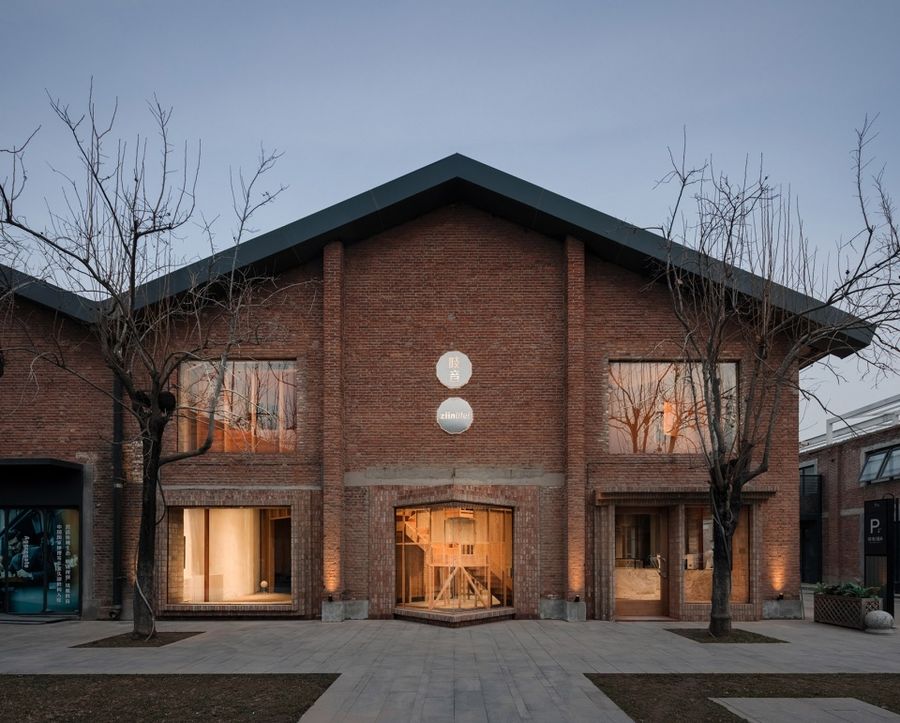
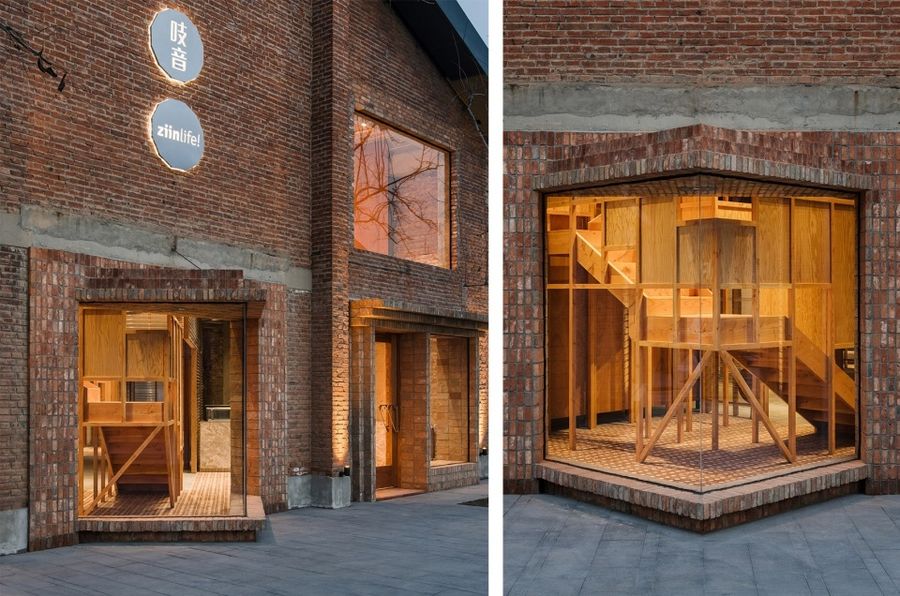
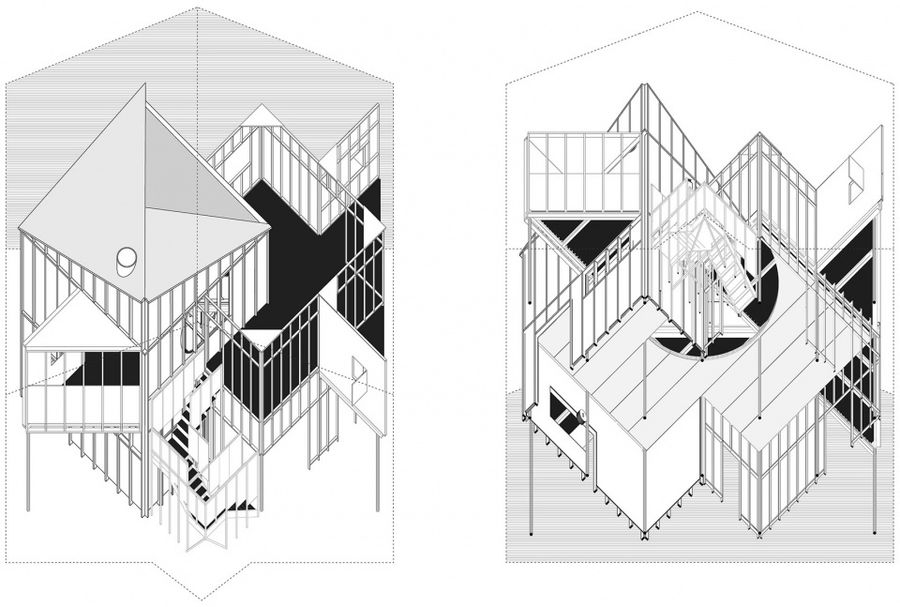
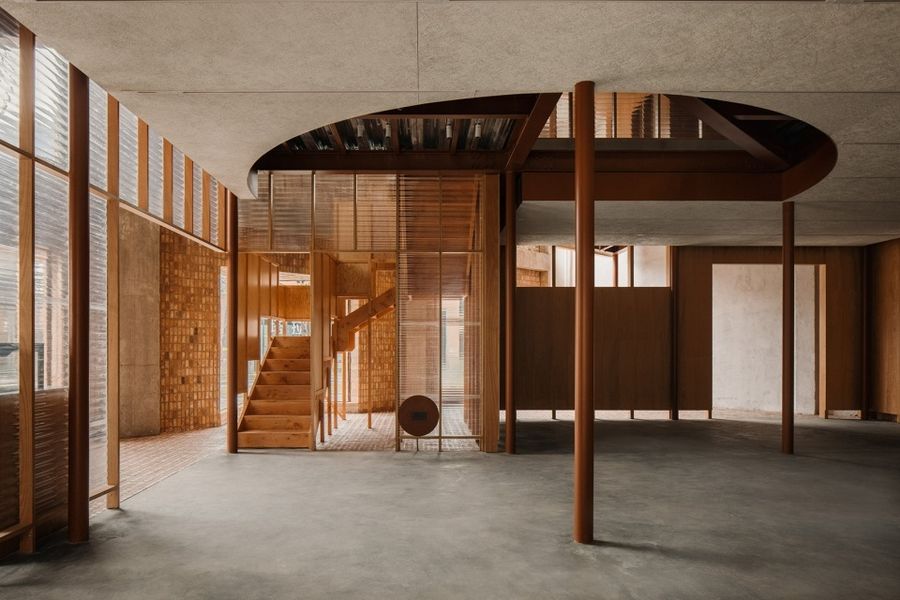

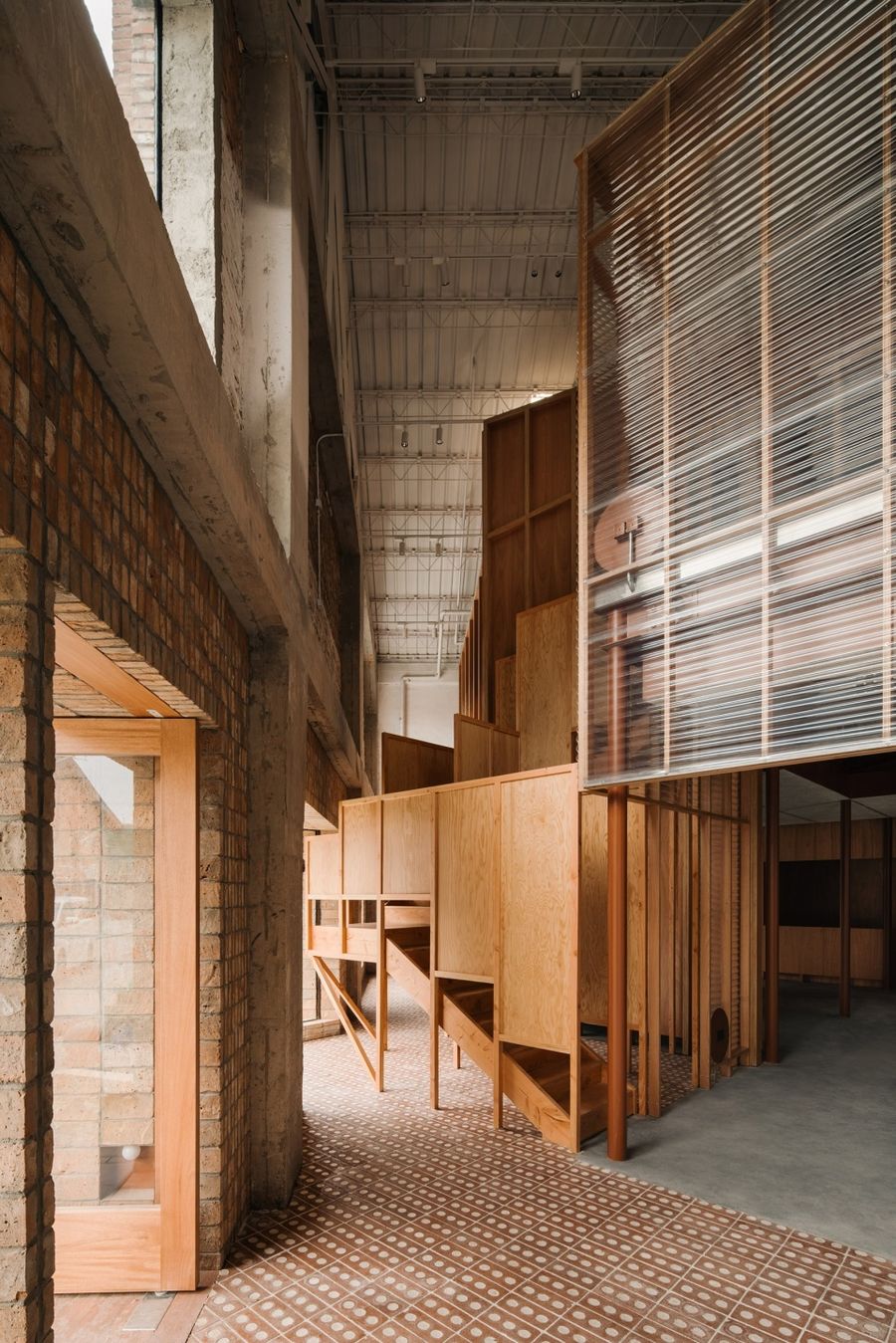
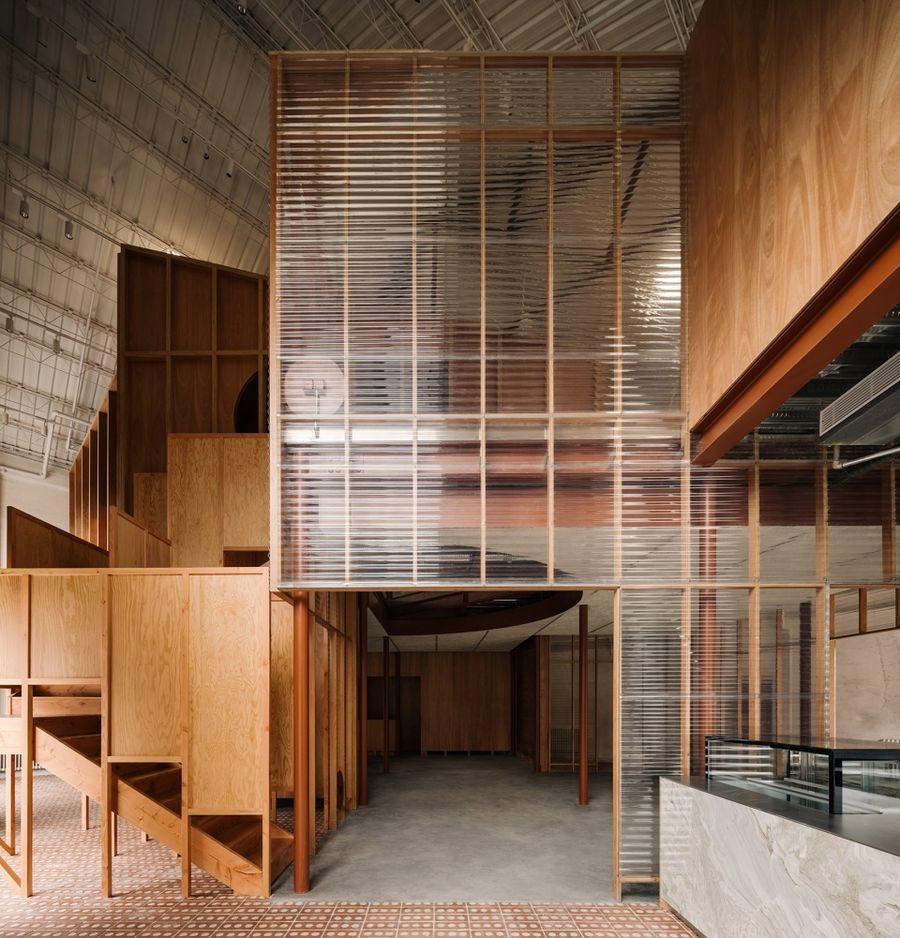
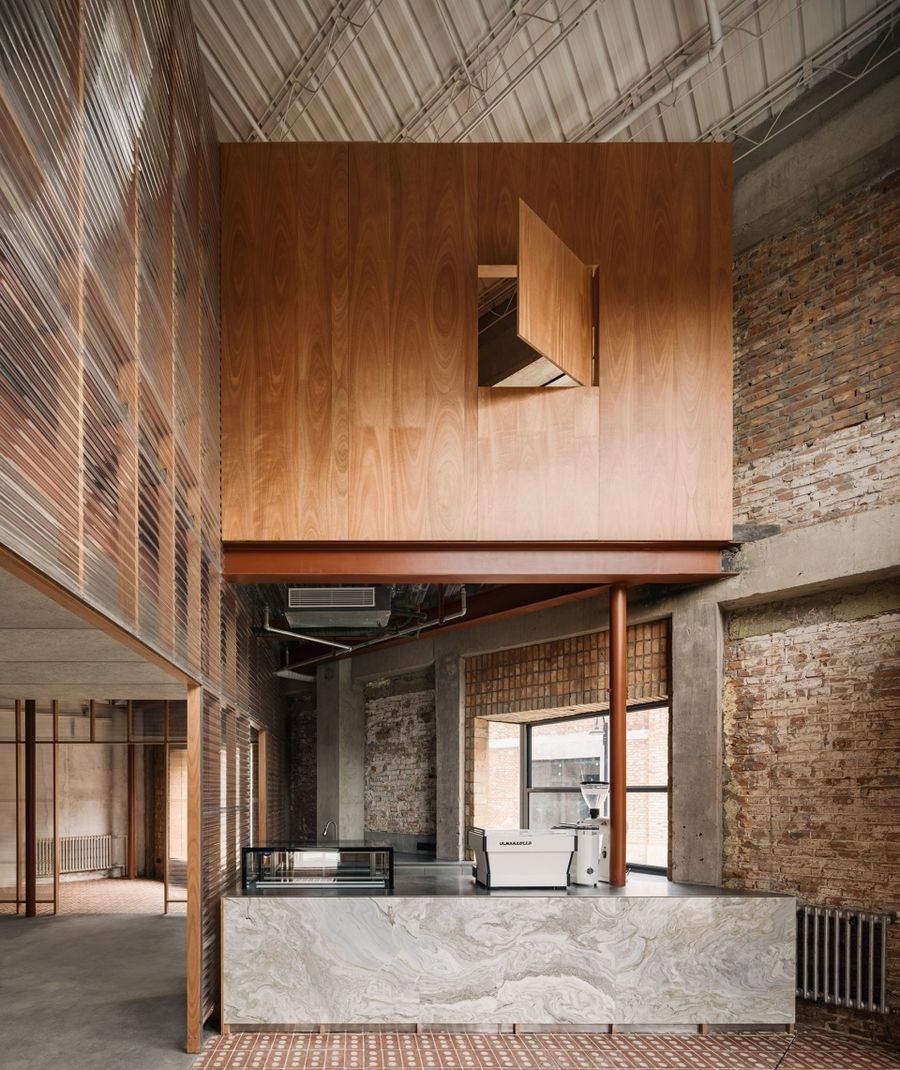
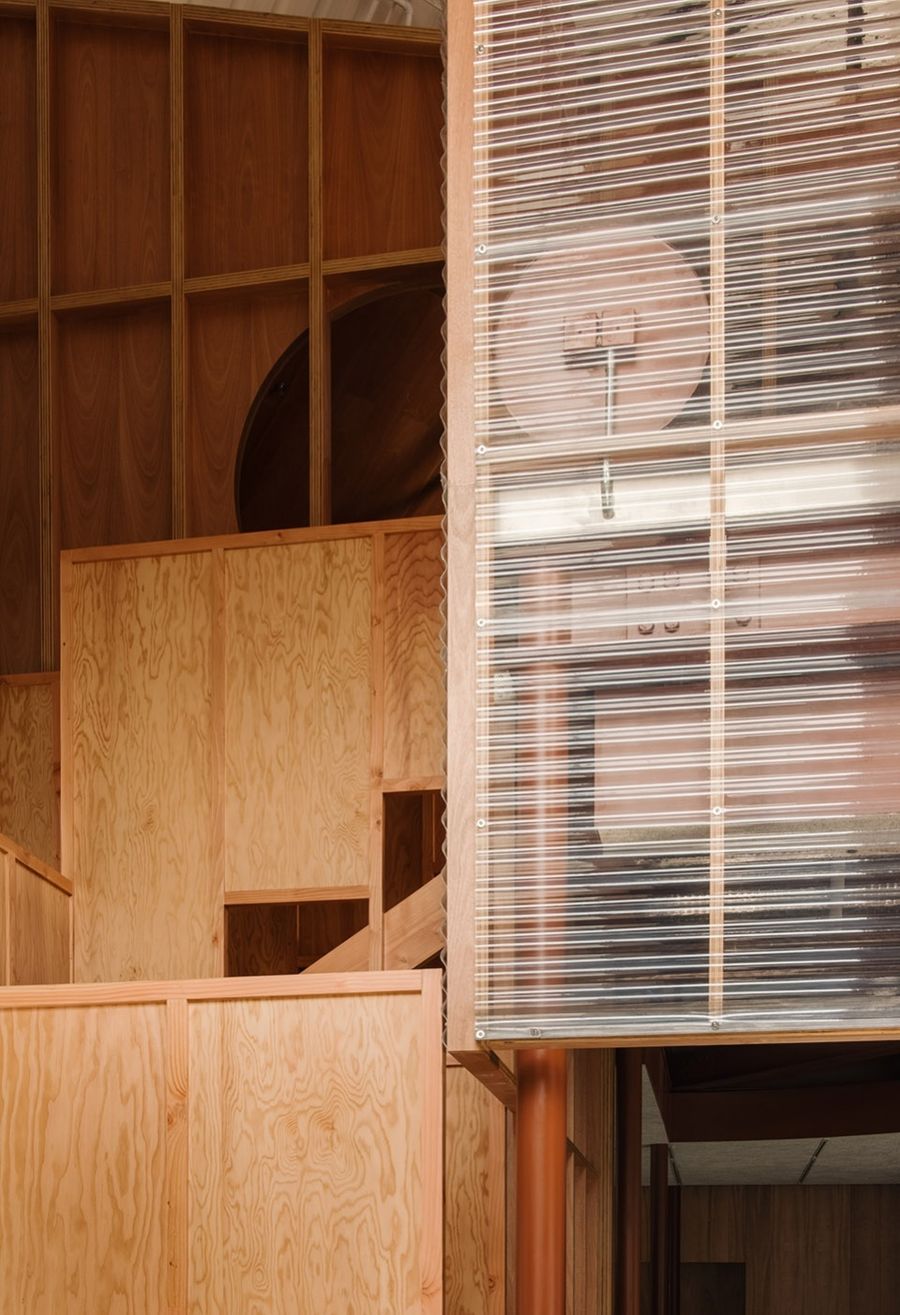
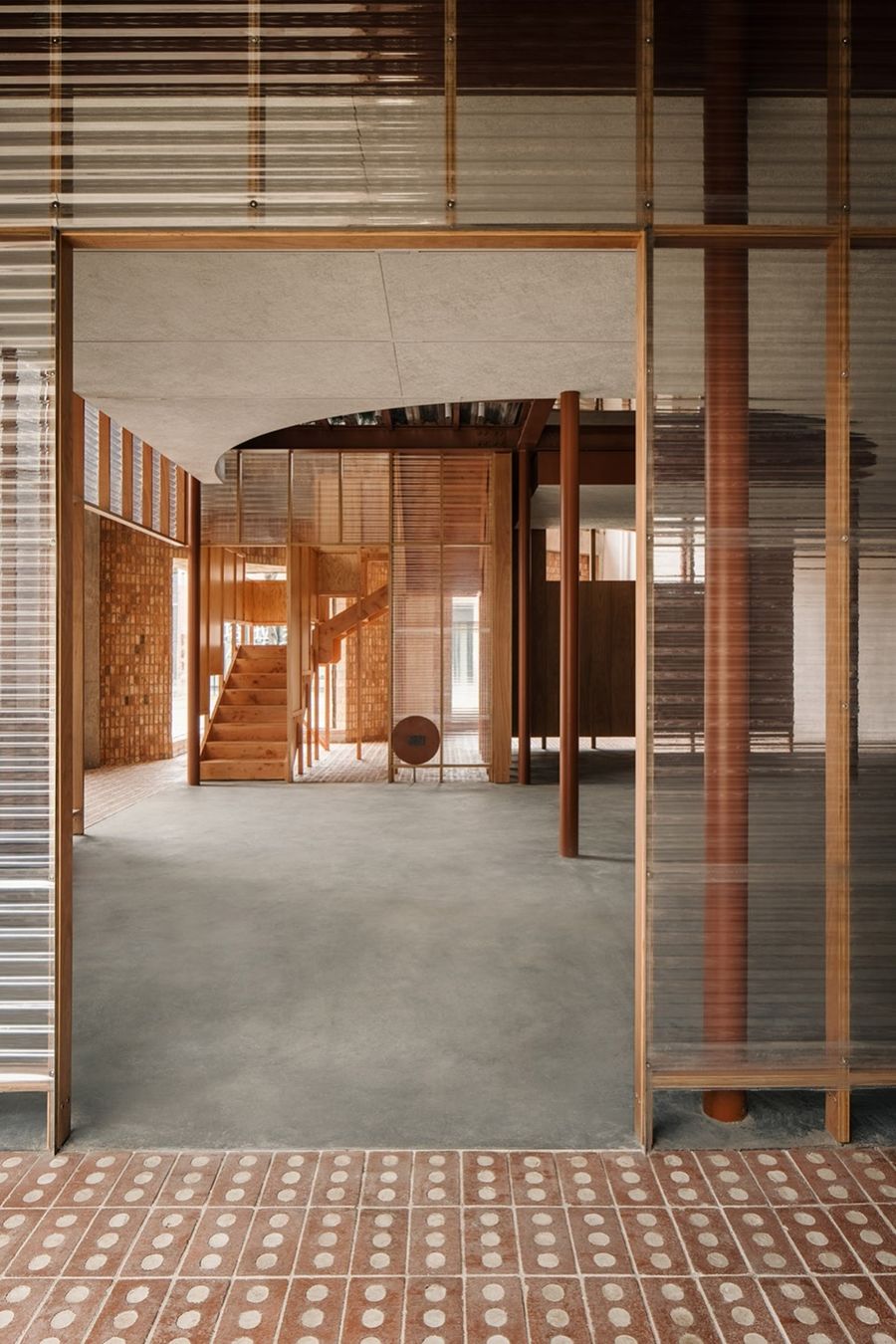
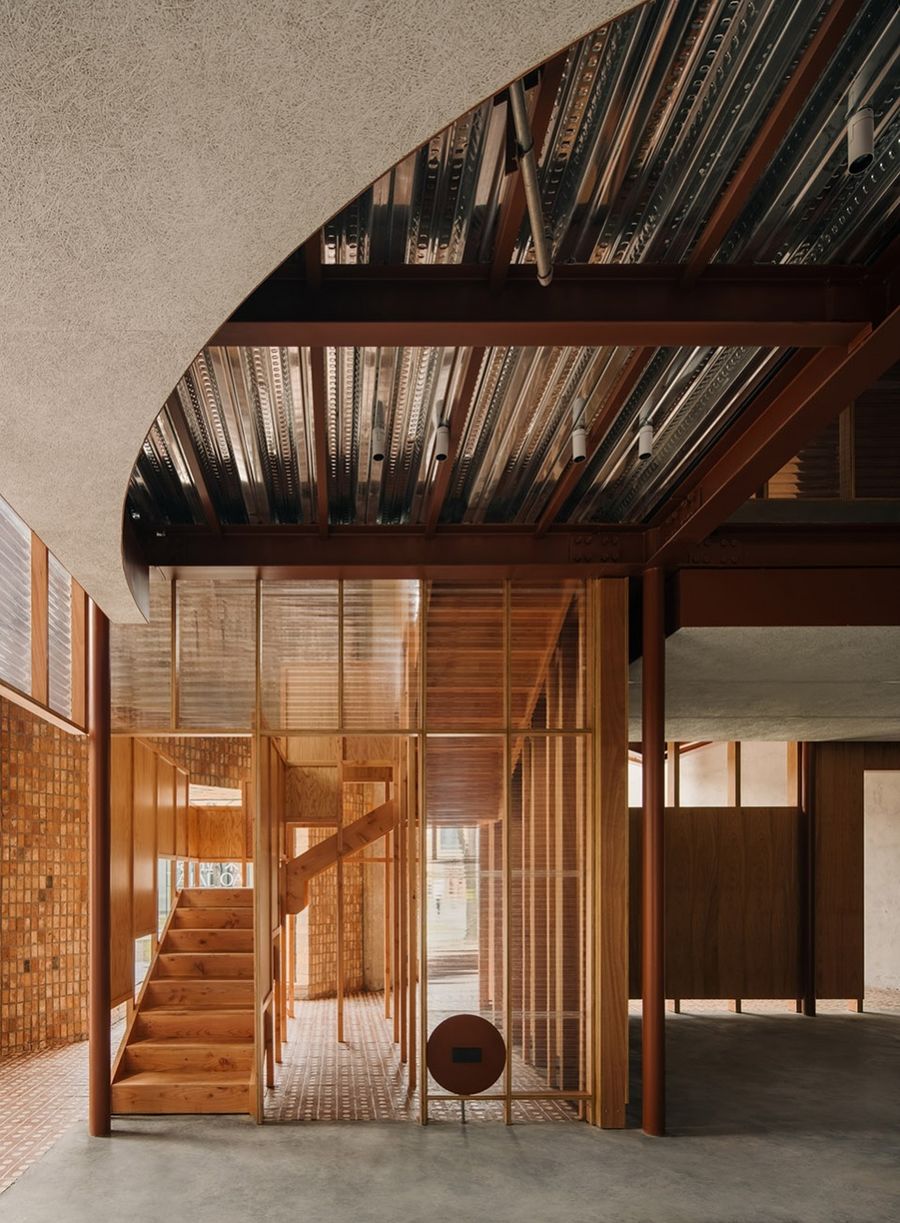
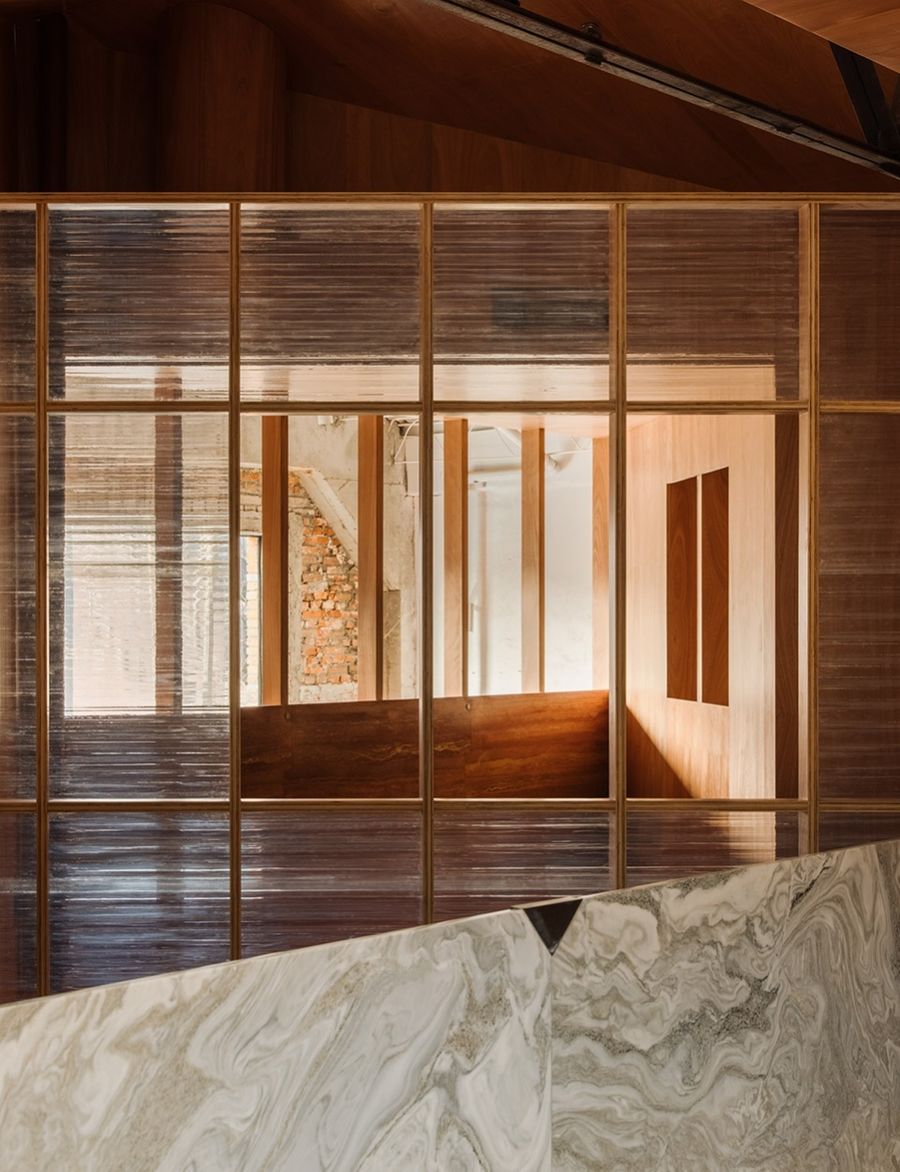
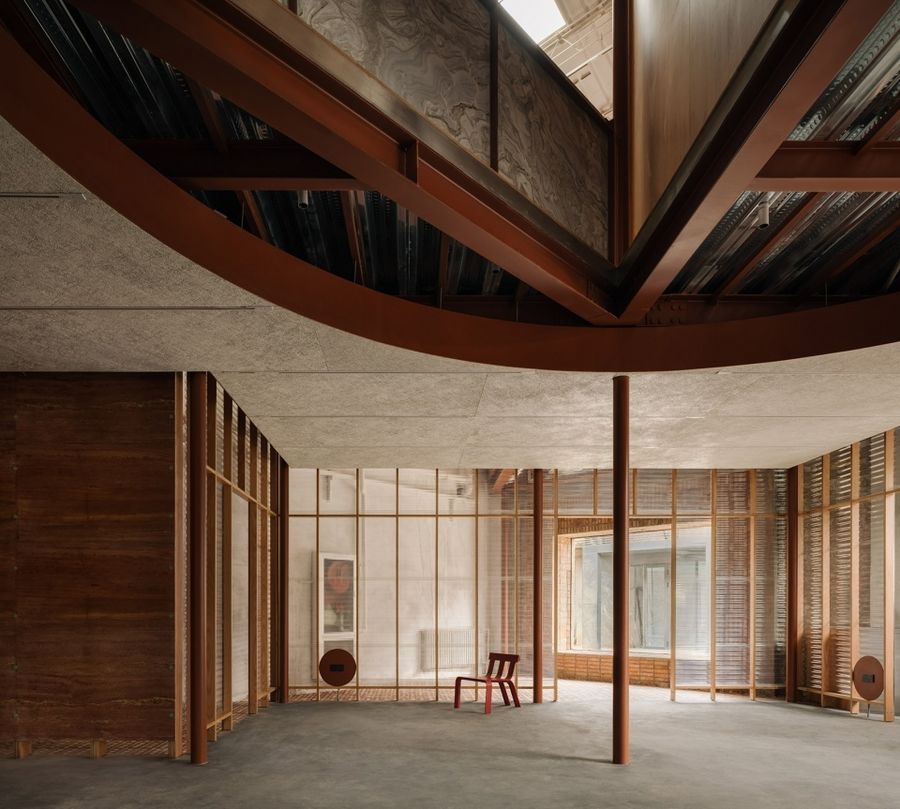
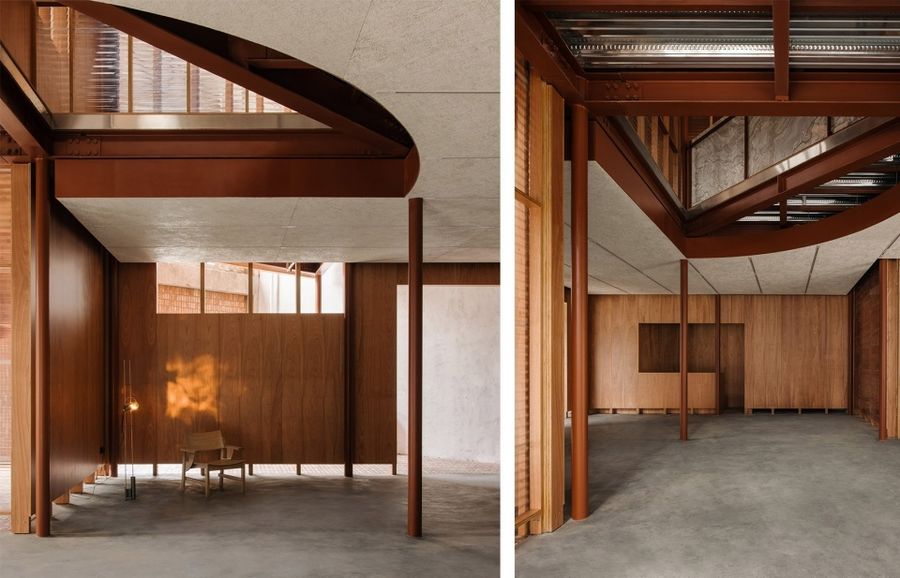
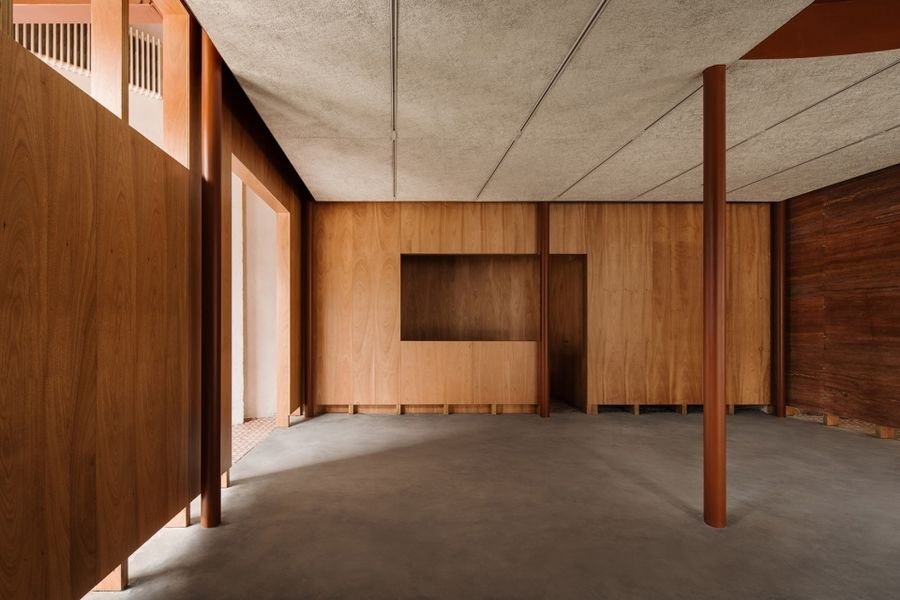
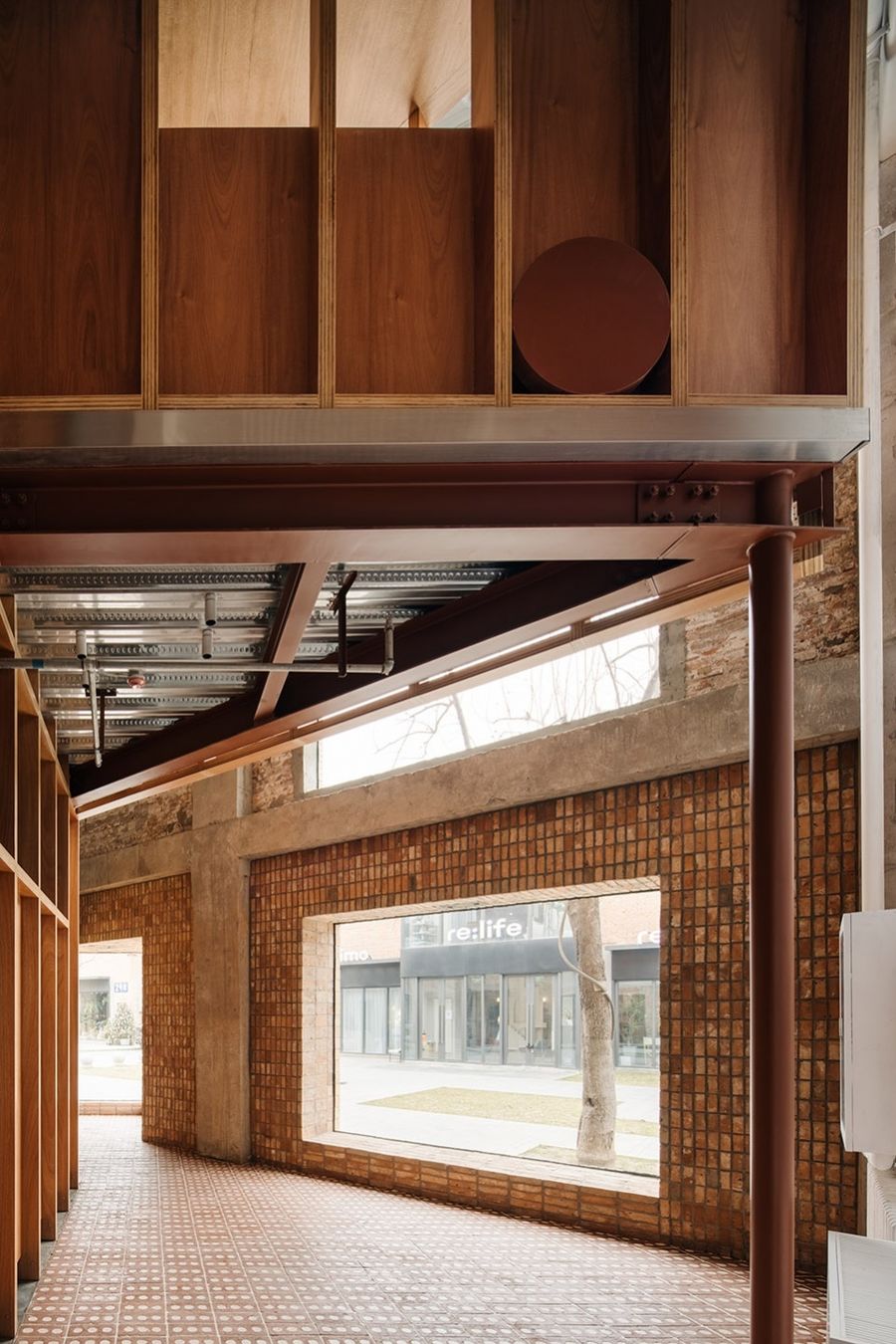
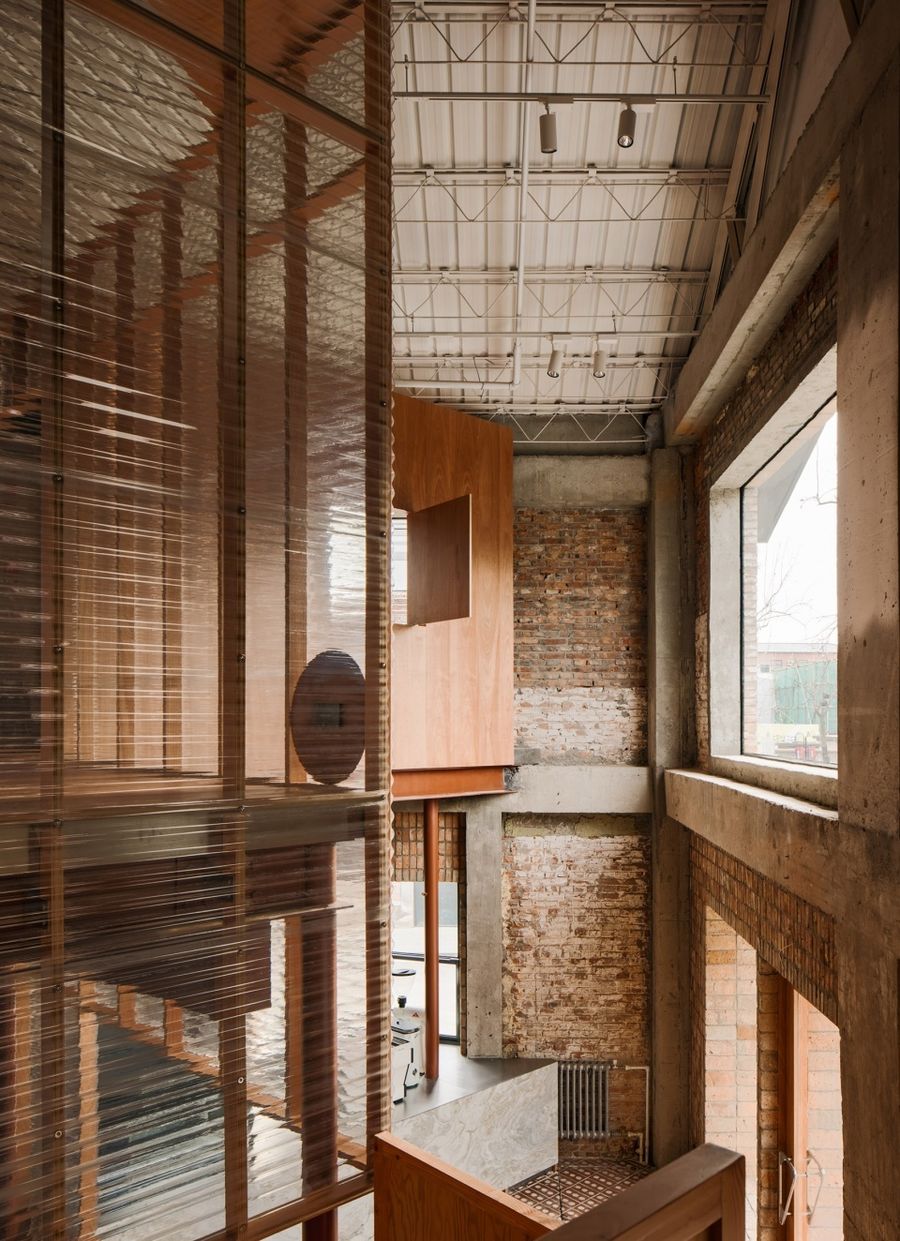
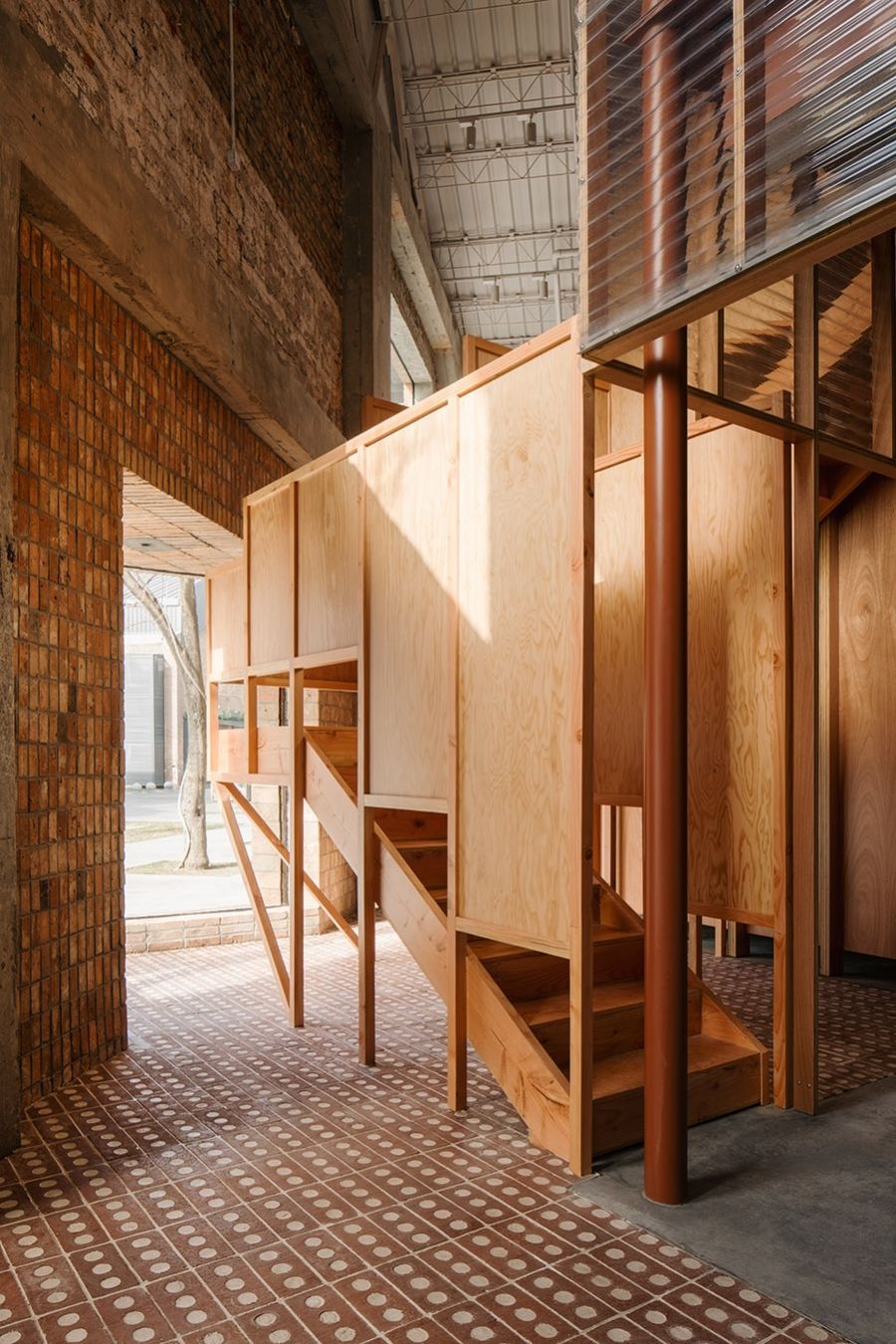
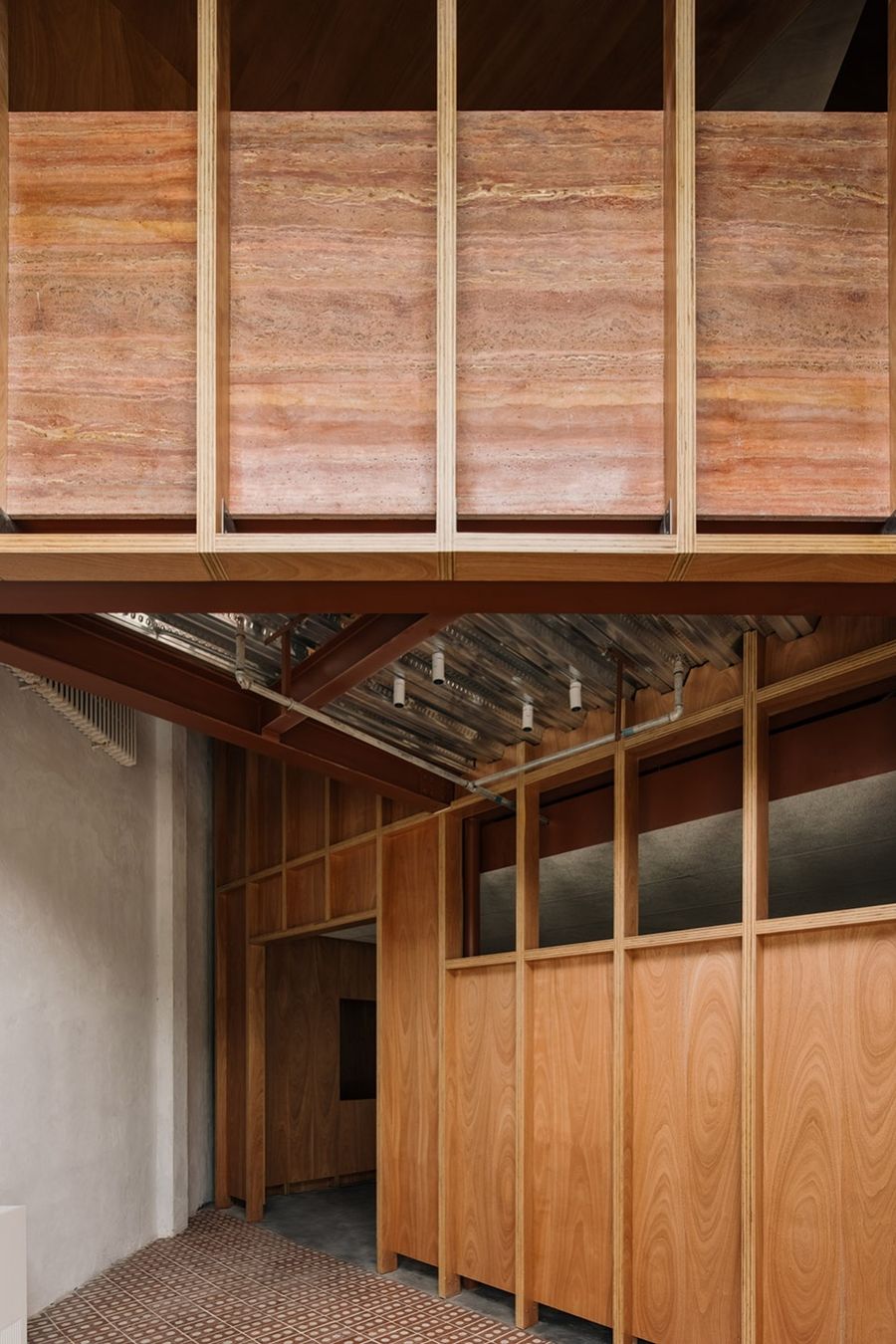
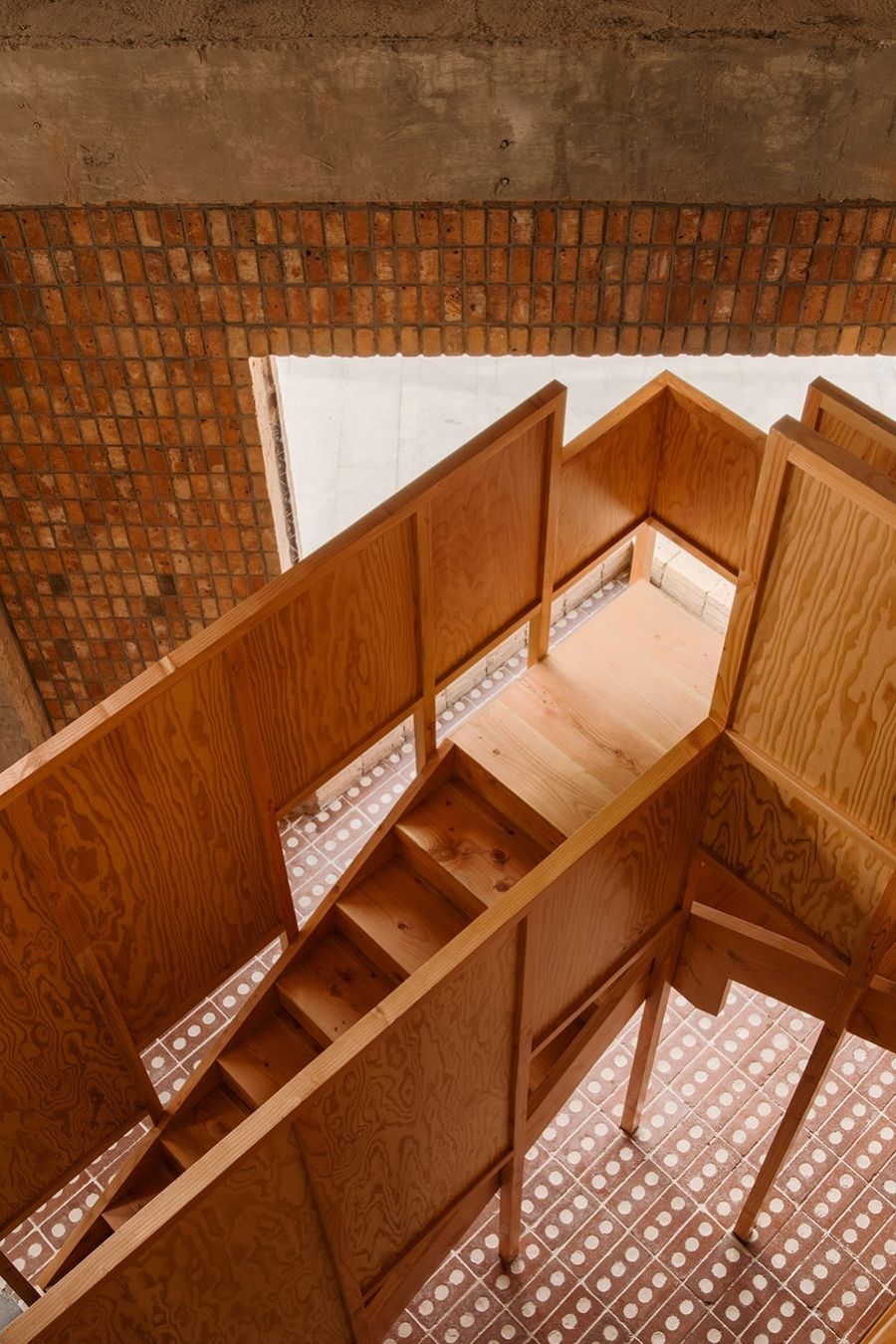
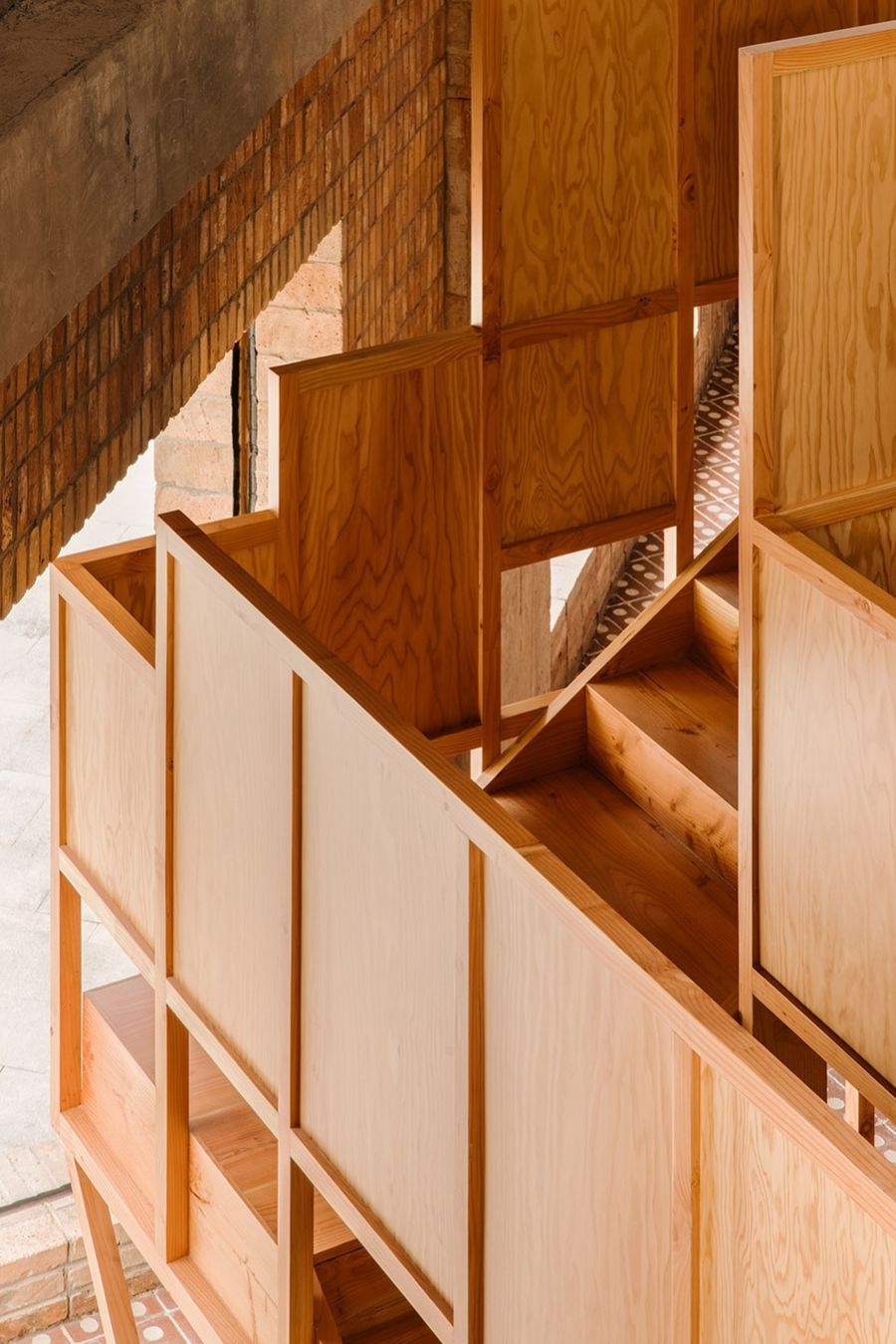
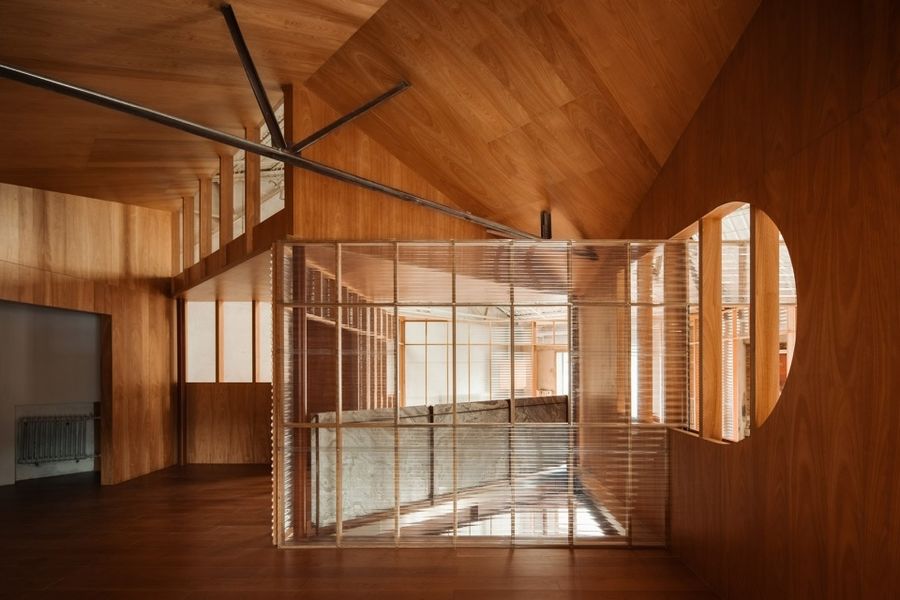
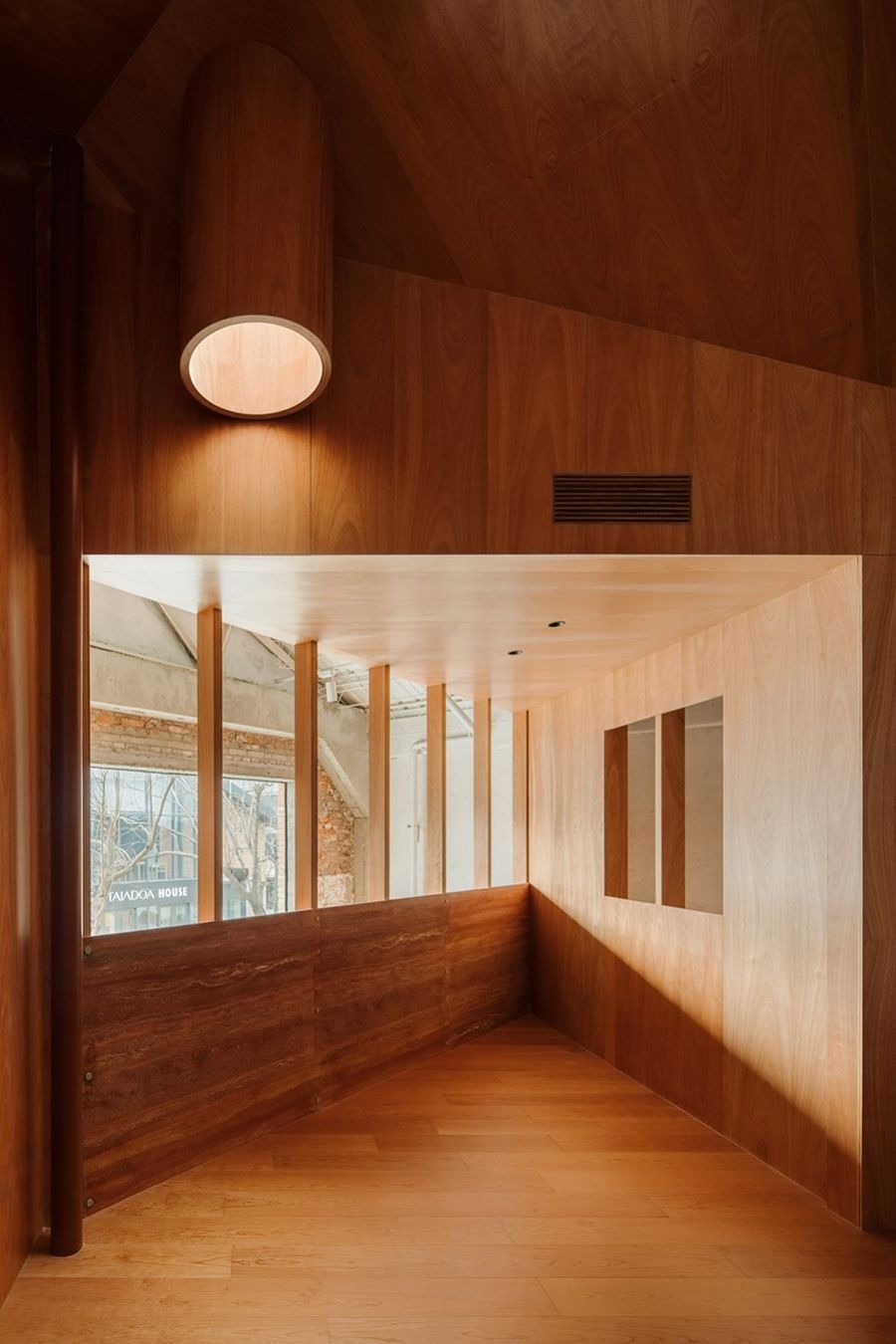
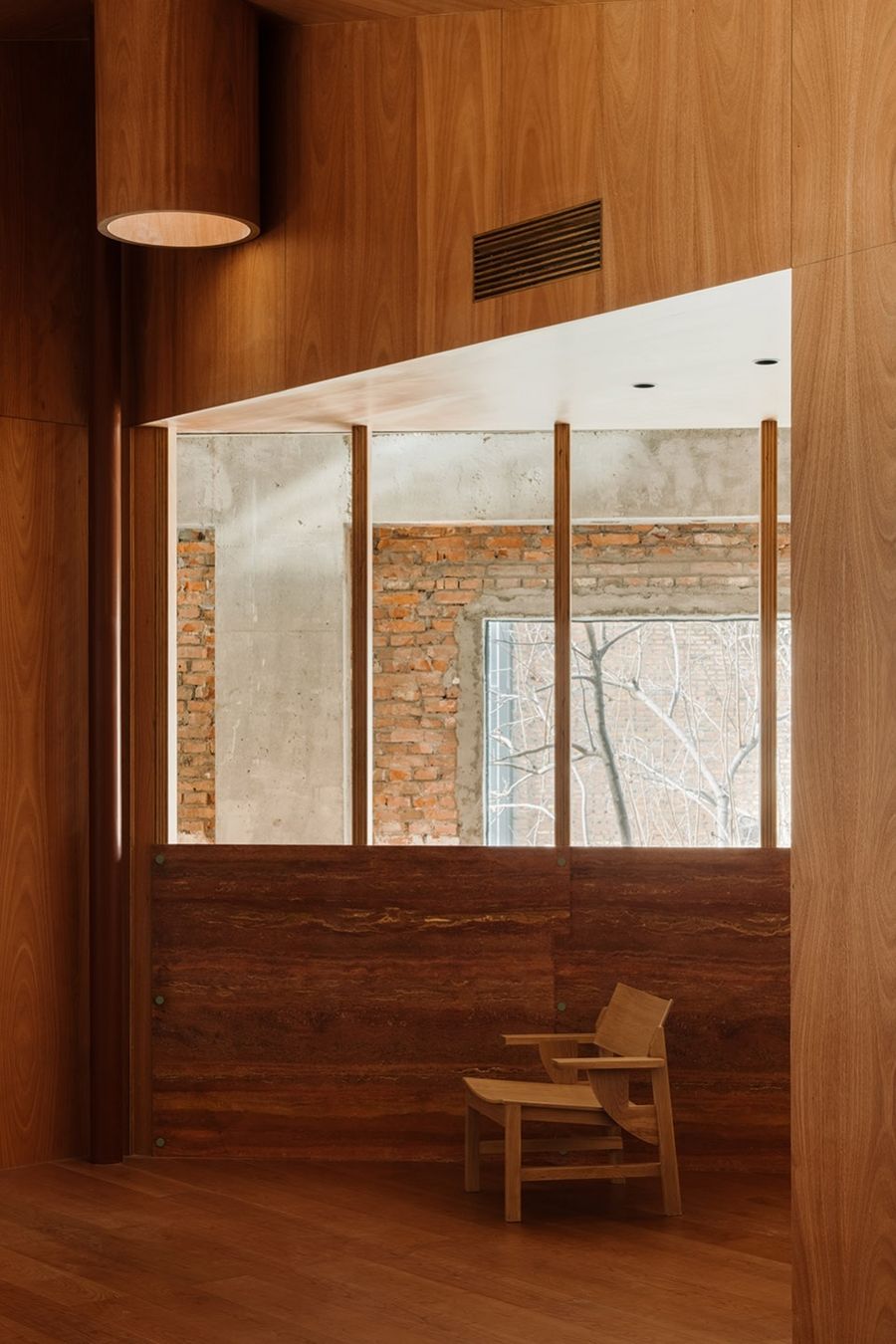
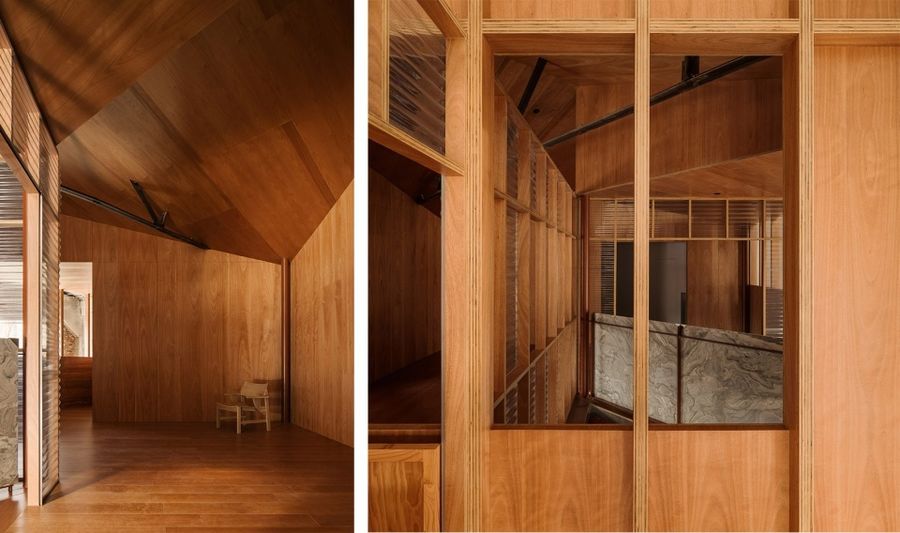
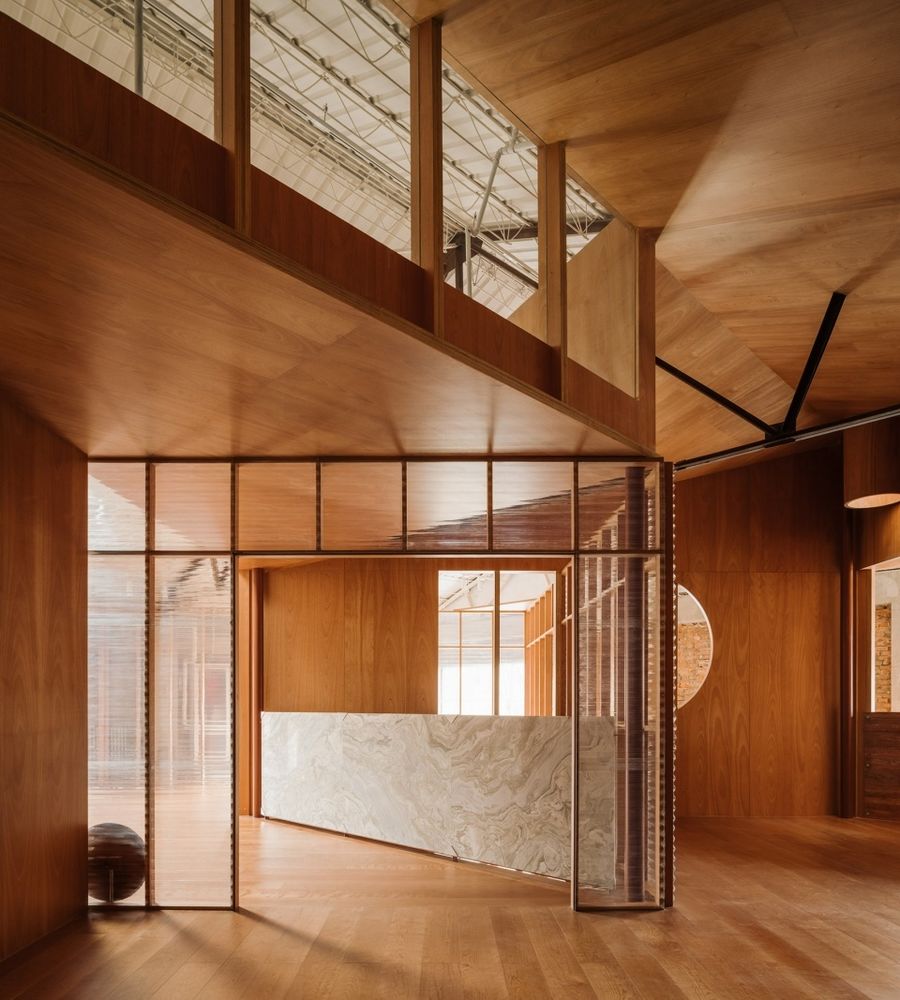
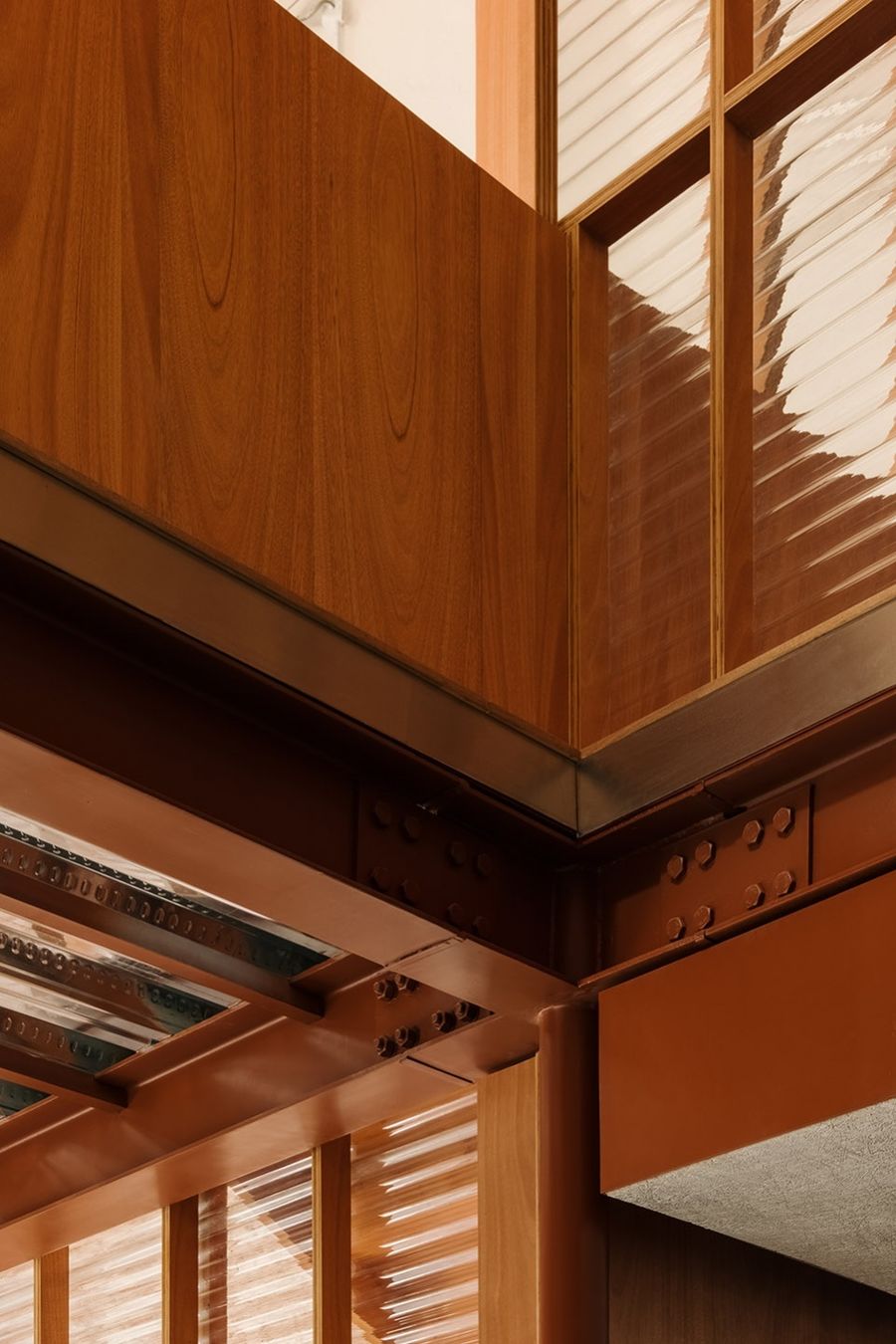
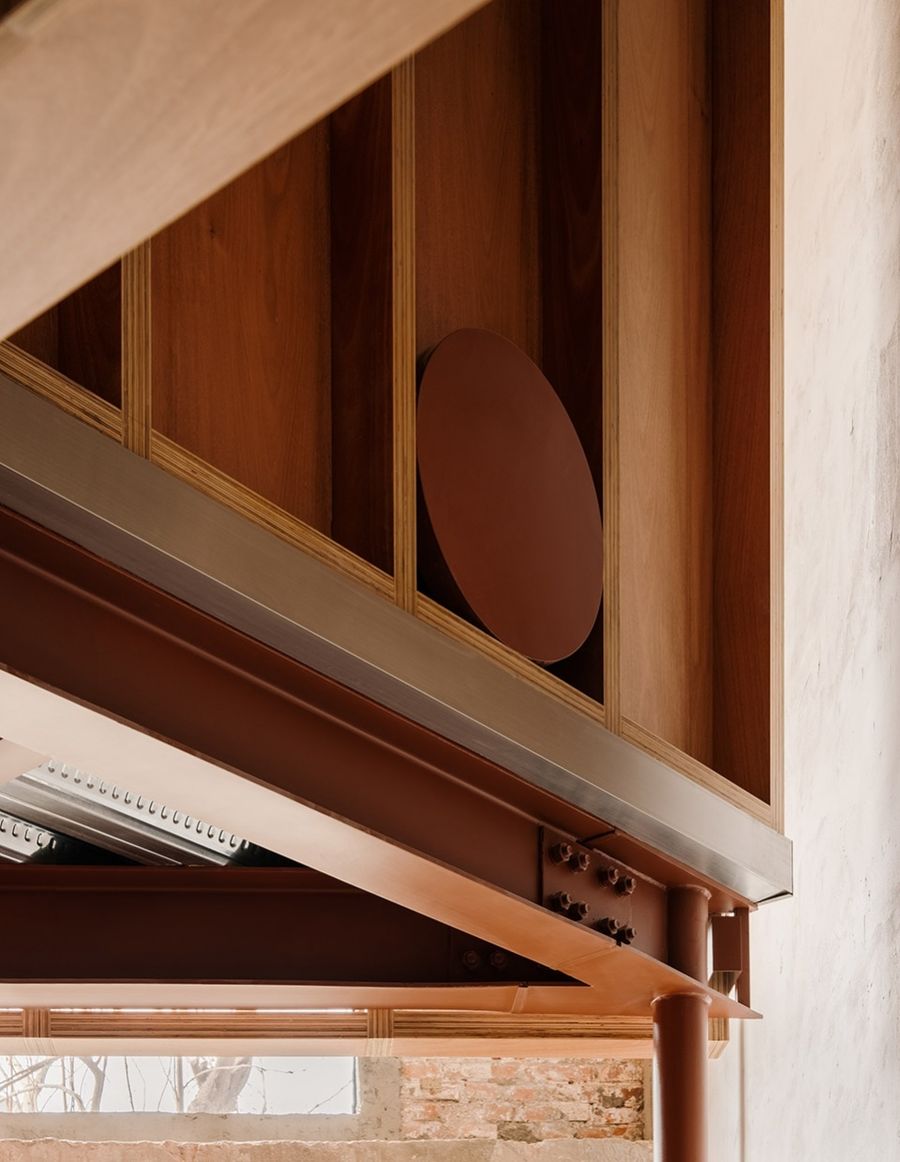
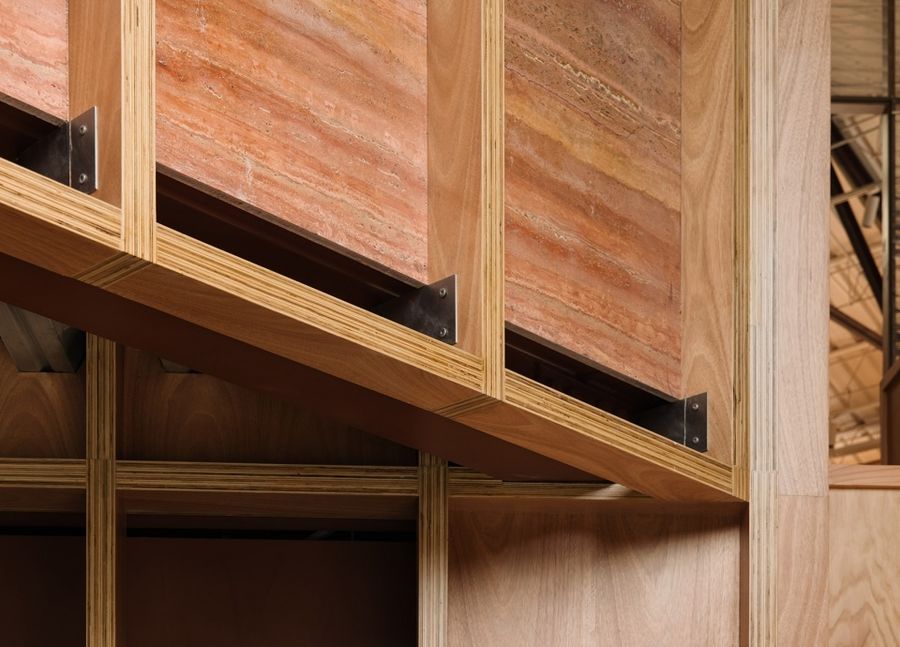
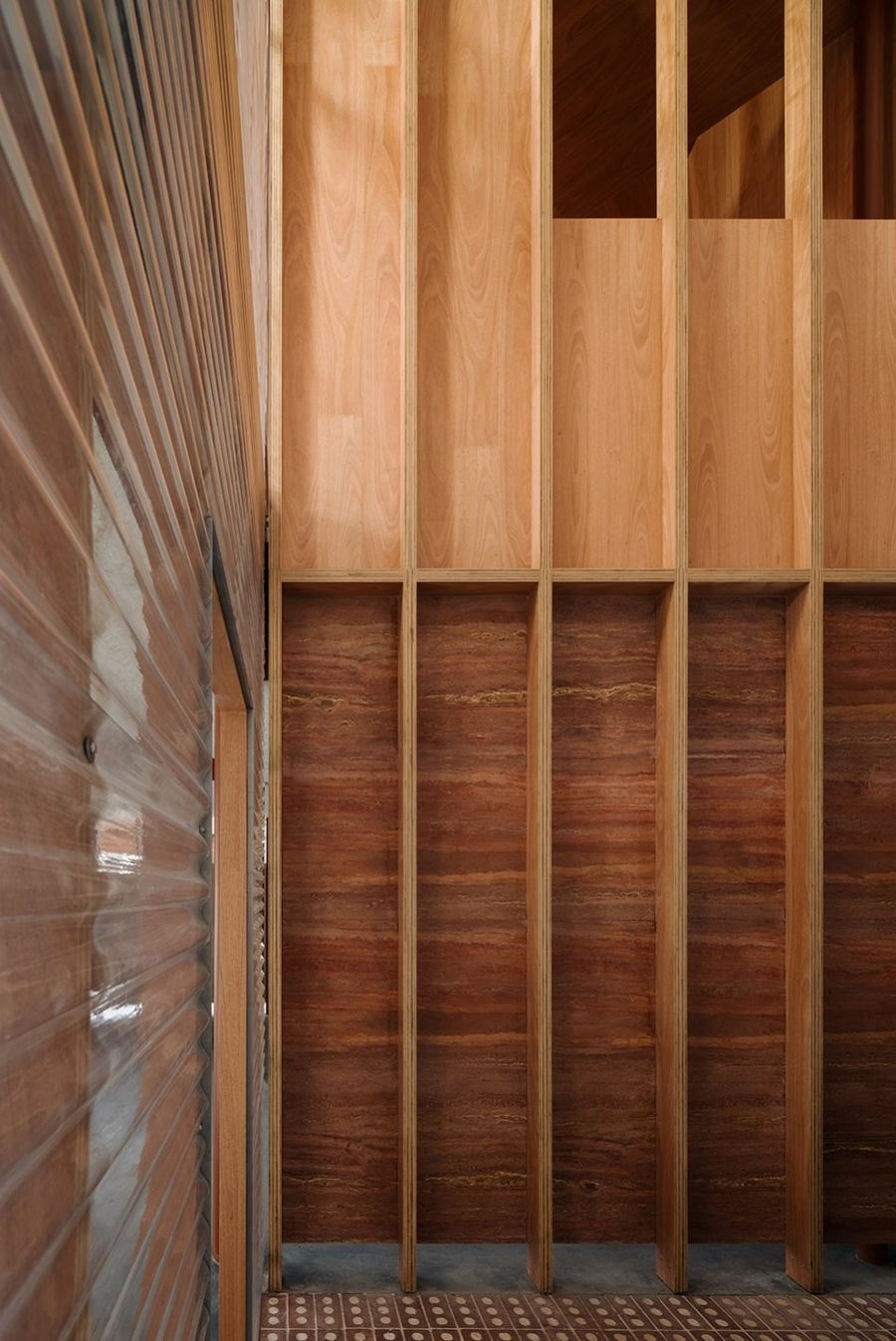
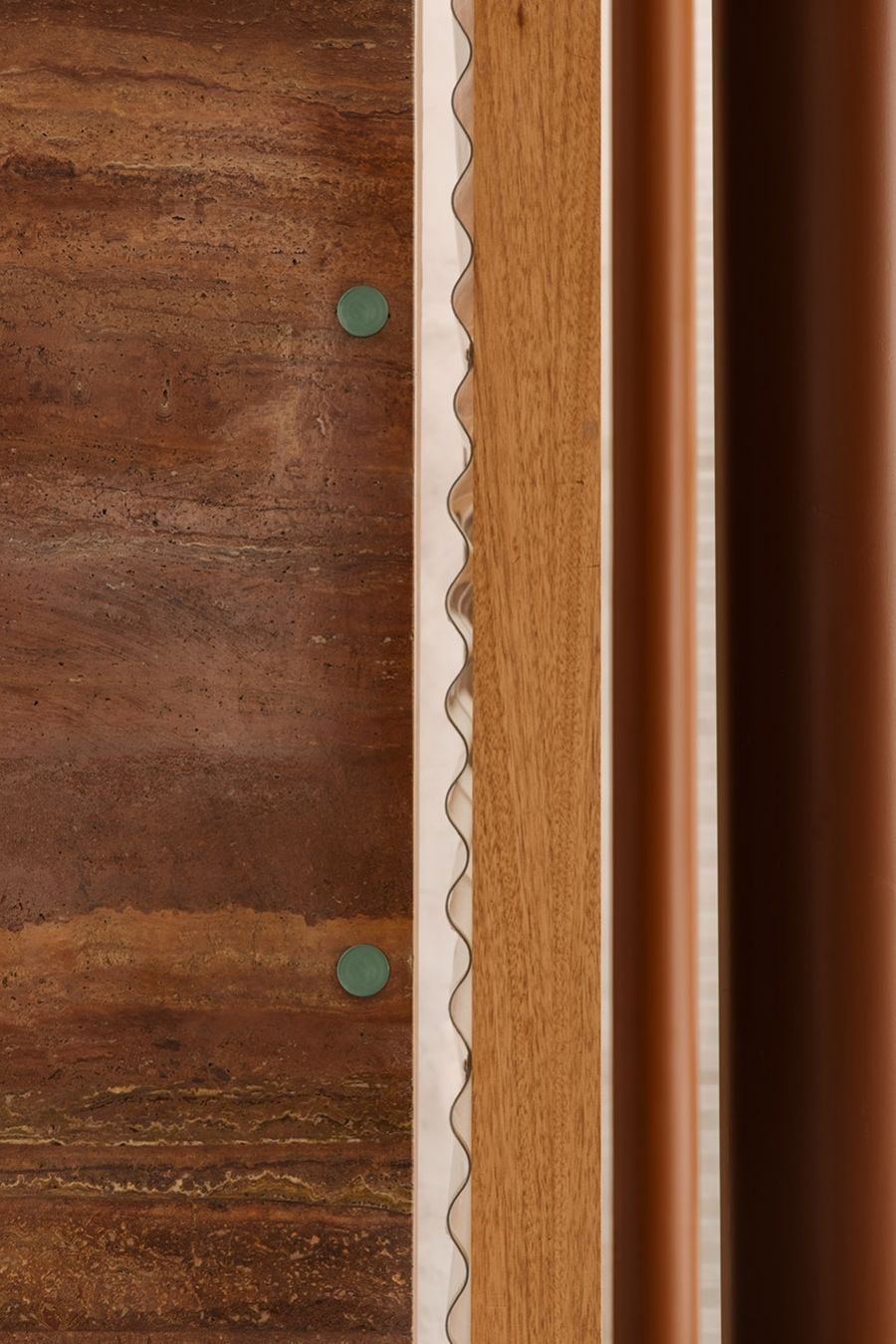
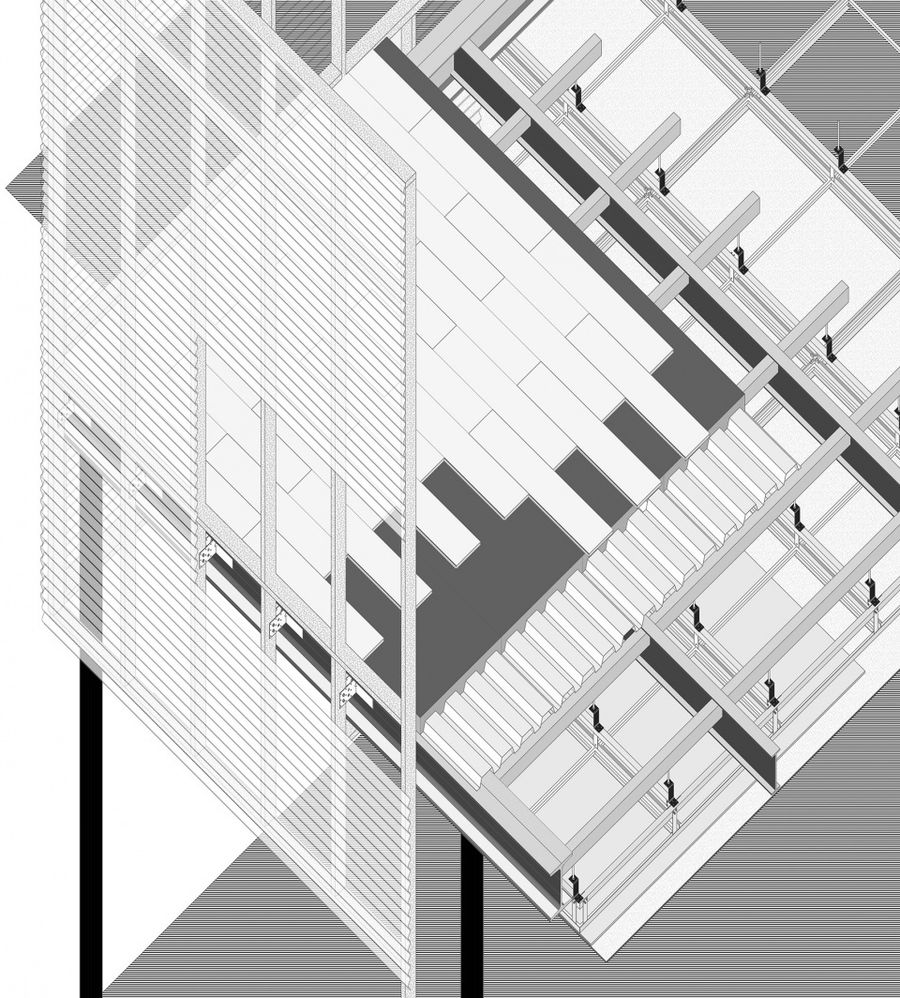
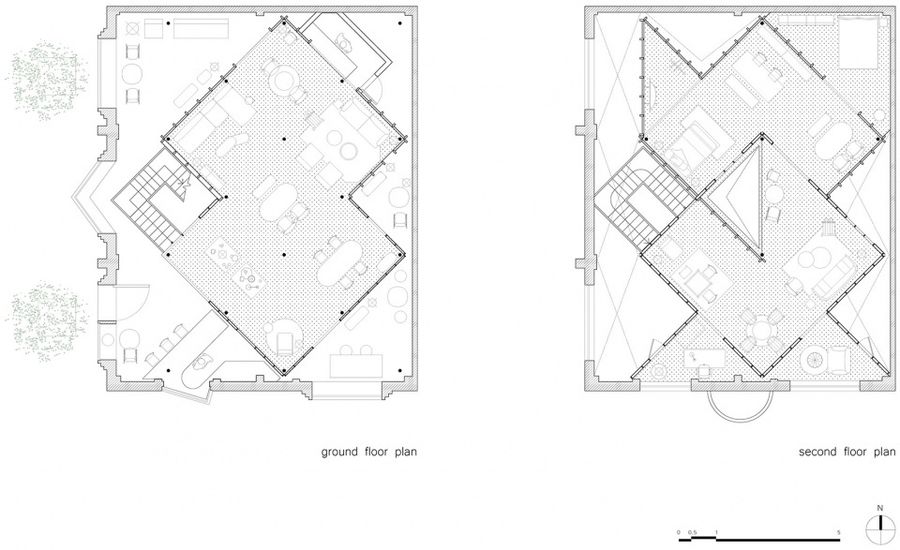
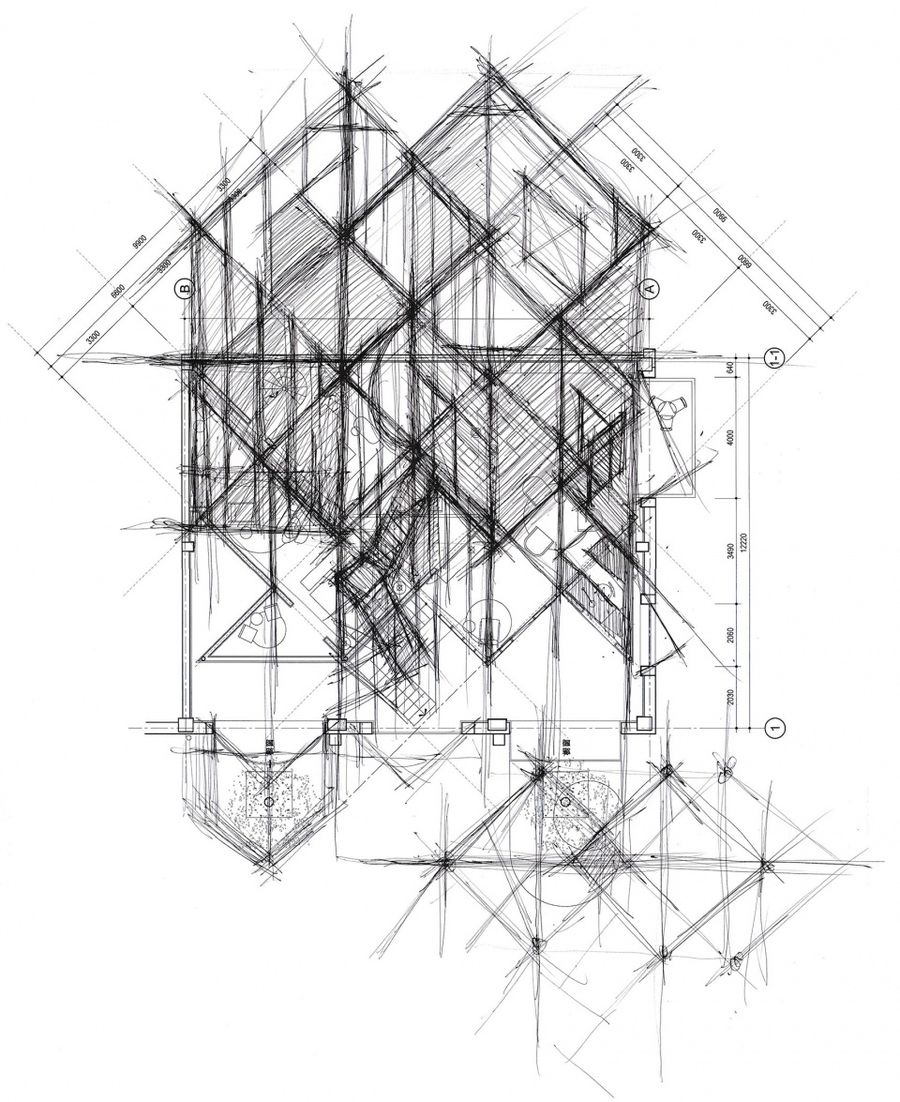





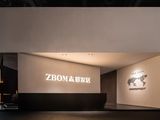





評(píng)論(0)